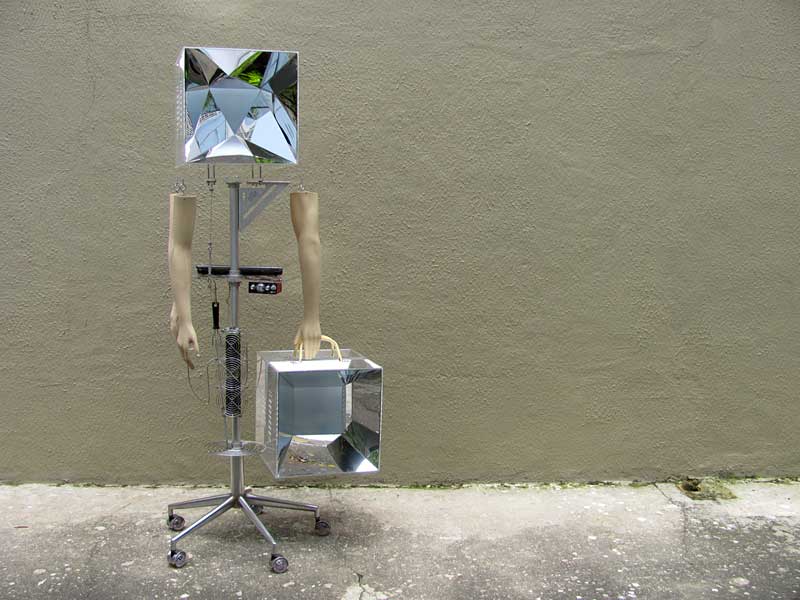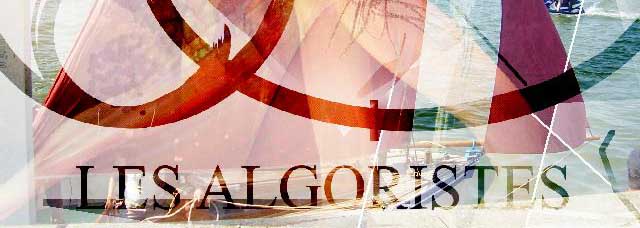
Zaven Pare : Ex Machina
Golem: Will the Code emerge out of the Mud?
Golem at MAHJ, March 8 -July 16 at. Paré at Charlot's March 14 - April 22, 2017
At this end of 2016-2107 winter, the thorny relations between mud and code lead out of twe Parisian events: the Golem expo at MAHJ (Musée d'art et d'histoire du judaïsme) and the Zaven Paré solo exhibition at Galerie Charlot (both in "Le marais", in the 3d district). And they let us think that this large field has still to be explored, or built out... unless perhaps do they prove that form will never emerge peacefully out of matter, or code from mud.
Basically, the Golem is a coarse model of human body, which comes to life when a paper with God's name is put into it's mouth. Software into hardware, so to say. With a variant, with the code written onto it's forehead, and the possibiity of changing the code to end the process (just removing a letter changes "God" into "Death" (see Wikipedia, and some references below).
The surprise is that the Judaic philosophy (as far as we know it, and it could be deeper) and more surprisingly the Judaic or Israel's digital art (which diccans tries to analyse exhaustively) makes nearly no use of the rich digital (or "numérique", to speak french) resources of the Bible to find inspiration.
The Bible is full of digits. It starts grandiosely with the binary first chapter of Genesis. "God divided the light from the darkness", and so forth along seven days. Then on second chapter, the binary "tree of the knoledge of good and evil". Then we have ten commandments, twelve tribes... and a full and long fourth book of the Torah, the Numbers.
If we see the New Testament as judaic, it starts with the list of 14 generations from Abraham to Joseph, includes the surprising binay command "Let your communication be, Yea, yea; Nay, nay". It takes its highest coding fligh with Joh'ns first words "In the beginning was the Word... All things were made by him". Apocalypse plays with 666, "the number of the beast" and nearly concludes with the strongly numerical City of God. But a more hair ruffling waits un in its 4th chapter. Here, Israel is represented by the squared number of its tribes (144 000 sealed)... but after them "a great multitude, which no man could number", which could be taken as a revenge of spirit over the codes and numbers.
Nothing of all that is present in the Golem's exposition, even in the "Golem, a being of letters" facet which focuses on typographic games.
An attempt was made, in 1965 to give the myth a new life, with the Golem.1 computer built by Chaim Pekeris at Rehovot Weizmann Insitute. Norbert Wiener commented in his boolket God & Golem, Inc. A Comment on Certain Points where Cybernetics Impinges on Religion( Springer, 1964). Without further developments.
The last artist to dig further is Zaven Paré. Some of his works are present at the Golem expo, and we will see more at his solo show at Charlot. But Paré does not enter in the matter/code tension. He stays on the derisive or disturbing aspects of man machine. On the one hand he gives symbolic expression to DIY assemblies of body and Meccano parts, or video projections on plastic faces. On the other hand, he has spent several years in a Japanese famed robotics laboratory, but keeps mainly on facial expressions and body gesture. He comments about narration, but stays away from code. Indeed, says he in an interview with Nicolas Barrial for Makery: "I use less and less code".
So the potentially rich field offered by the Bible to cultivate the relations between code and matter remains wilderness. Will somebody ever take his/her plow and open the furrow ? P.B.
Pierre B.


